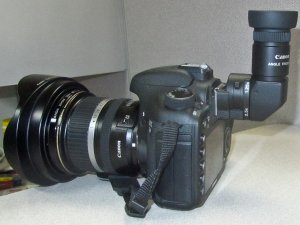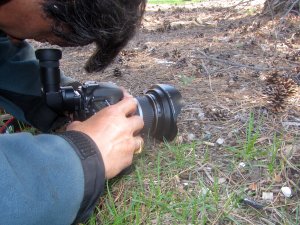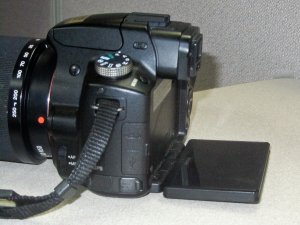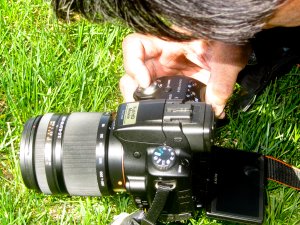Online Magazine
Recent Posts
- Safeguard your Cellphone Photos
- Black & White to Color – Instantly
- Wearing Many Hats
- Video Roundup
- Rescuing Your Blurry Pictures
- Showing Their Age
- What is Your Angle?
- Panorama Photos
- Humorous Photos
- Close Ups
- Fisheye Pictures
- Photo Antiquities
- Printing Big
- Appreciating Scale
- Celebrity Sightings
Tags
More Places to Go
- Free "How-To" Books “How To” books for popular cameras 0
- Vist Us on Facebook keep in touch with us on Facebook 2
Archives
- July 2023 (1)
- March 2023 (2)
- February 2023 (1)
- December 2022 (1)
- October 2022 (1)
- September 2022 (8)
- August 2022 (9)
- July 2022 (1)
- June 2022 (1)
- June 2021 (1)
- May 2021 (1)
- March 2021 (5)
- February 2021 (4)
- January 2021 (2)
- April 2019 (1)
- March 2019 (1)
- February 2019 (1)
- October 2018 (2)
- April 2018 (1)
- March 2018 (4)
- February 2018 (1)
- November 2017 (1)
- August 2017 (1)
- June 2017 (1)
- April 2017 (1)
- March 2017 (5)
- February 2017 (2)
- January 2017 (1)
- October 2016 (1)
- September 2016 (1)
- August 2016 (1)
- July 2016 (1)
- May 2016 (1)
- April 2016 (1)
- March 2016 (2)
- February 2016 (1)
- January 2016 (2)
- December 2015 (1)
- November 2015 (1)
- October 2015 (3)
- April 2015 (1)
- March 2015 (5)
- February 2015 (1)
- January 2015 (4)
- December 2014 (2)
- November 2014 (5)
- October 2014 (2)
- September 2014 (1)
- August 2014 (2)
- July 2014 (1)
- May 2014 (1)
- April 2014 (5)
- March 2014 (5)
- December 2013 (2)
- November 2013 (18)
- October 2013 (1)
- September 2013 (1)
- August 2013 (1)
- July 2013 (1)
- June 2013 (3)
- May 2013 (1)
- April 2013 (2)
- March 2013 (1)
- February 2013 (1)
- January 2013 (1)
- December 2012 (1)
- November 2012 (2)
- October 2012 (2)
- September 2012 (5)
- August 2012 (2)
- July 2012 (1)
- June 2012 (1)
- May 2012 (1)
- April 2012 (4)
- March 2012 (1)
- February 2012 (1)
- January 2012 (3)
- December 2011 (1)
- November 2011 (3)
- October 2011 (1)
- September 2011 (2)
- August 2011 (2)
- June 2011 (3)
- May 2011 (4)
- April 2011 (8)
- March 2011 (8)
- February 2011 (10)
- January 2011 (6)
- December 2010 (11)
- November 2010 (14)
- October 2010 (6)
- September 2010 (12)
- August 2010 (2)
- July 2010 (4)
- June 2010 (3)
- May 2010 (1)
- April 2010 (1)
- March 2010 (2)
- February 2010 (1)
- January 2010 (1)
- December 2009 (1)
- November 2009 (2)
- October 2009 (2)
- September 2009 (1)
- August 2009 (3)
- July 2009 (2)
- June 2009 (1)
- May 2009 (2)
- April 2009 (1)
- March 2009 (2)
- February 2009 (1)
- January 2009 (3)
Unusual Stocking Stuffers
28th November 2011
Are you still thinking about those last moment stocking stuffers as the final days of the frantic holiday season quickly approach? It’s not always easy to think of a gift for a photographer especially one who already has lenses, bags, tripods and countless other accessories. Therefore, we’ve put together a list of different ideas for you to consider – whether it’s you or someone else – this holiday season.
 You can help Santa with these unusual stocking stuffer ideas for that photographer on your list.” |
Lens Bracelet
The Lens Bracelet™ from Photojojo (www.photojojo.com) is, as Photojojo says: the way to wear your camera love on your sleeve. This soft silicone bracelet looks like an actual focusing ring; it even shows the embossed “50mm” and AF/MF switch to the lens grip ridges. You probably won’t need to worry about sizes because one size fits all. The two types Photojojo has available are 50mm prime or 24-70mm zoom.
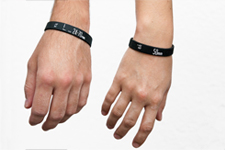 The Lens Bracelet from Photojojo (www.photojojo.com) is about $10.00 |
Mode Dial Cuff Links
Here is something different to wear for a more formal New year’s eve party. As you can see these Camera Mode Dial Cufflinks links resemble the mode dial found on most cameras. Mode Dial Cuff Links from www.cufflinks.com for about $49.95. These are available from www.cufflinks.com for about $49.95 as well as amazon.com and other online stores.
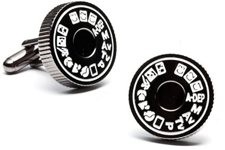 Mode Dial Cuff Links from www.cufflinks.com. |
F-stop Watch
The way you tell time may not quite be the same anymore thanks to the F-Stop Watch. It displays time with F-Stop or the relative aperture of a camera lens. It measures the hours by aperture so, for example, it’s almost time for that meeting at F11, so you better get your papers together.
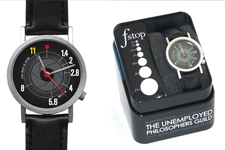 “The F-stop Watch from The Unemployed Philosophers Guild (www.philosophersguild.com) is about $34 online at Amazon.com and other locations. |
Lens Thermo Coffee Cups
What better way to keep your coffee or other drink hot on an outdoor shoot this winter than to use The Travel Coffee Mug/lens Cup/thermos from Perfect Fit. It’s a typical thermos cup except it’s shaped as a camera lens. Therefore, don’t try to attach it to your camera or don’t pour your hot coffee on your real lens. You’ll find it at several online stores; price is around $15 but depends on the type and style you want.
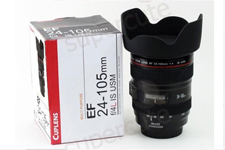 The Lens Thermo Coffee Cup from Perfect Fit. |
Vintage Camera Bookends
Electronic books obviously won’t need bookends but you may still have plenty of printed books and magazines scattered throughout your house or office. A vintage camera bookend might just be the practical solution. You’ll find these (not to mention the original old fashion vintage cameras) on eBay and other online store locations for about $45.
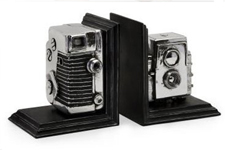 “The Vintage Camera Bookends from Home Decorators (www.homedecorators.com) |
Photographer’s Camera Vitamin Box for Pills
This might not be a bad idea for those photographers needing to use a pillbox. You can even have Kyle Design custom make this film vitamin box for you for about $19.95.
Kyle Designs (http://www.kyledesigns.com) also has several other unusual photography related ideas you can check out.
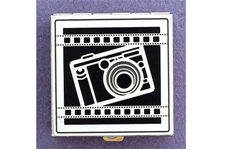 The Photographer’s Camera Vitamin Pillbox from Kyle Designs |
Petzl TacTikka Plus 4-LED Headlamp
The small and lightweight Petzl TacTikka Plus 4-LED Headlamp is for the nature photographer on your list. It uses four LED bulbs that will shine up to 150 hours. It even includes a pull-down red filter to help preserve night vision. The Petzl TacTikka Plus 4-LED Headlamp also has a flashing mode in case the photographic adventures takes you farther that you planned. The TacTikka Plus 4-LED Headlamp is about $45 and available at several online stores.
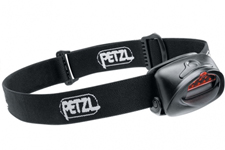 Petzl TacTikka Plus 4-LED Headlamp from Petzl (www.petzl.com). |
drop it MODERN Snap iPhone Case
One more item in the retro category is this retro camera case designed to protect an iPhone 4. It’s designed to fit on your device yet gives you complete access to all ports, controls and sensors. You can select from three designs (Black, white and woody). Important note: These cases fit iPhone 4 & iPhone 4S phones purchased through Apple or AT&T carriers only.
The Modern Snap iPhone Case is about $32.95 and available at several online stores.
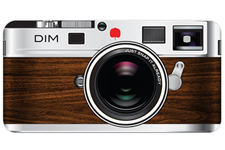 The drop it MODERN Snap iPhone Case (www.dropitmodern.com). |
I hope this has given you different gift ideas that you can add to your list or the list from another photographer friend or family member.
Written by: Scott Slaughter
Tips for buying a used camera
05th November 2011
Buying A Preowned Camera – Caveat Emptor
Although the prices of new dSLR cameras continue to drop as manufacturers release newer models, there are still many reasons you may want to consider a buying preowned camera.
Price is perhaps the main reason for many people. Are you currently using a point-and-shoot camera but are yearning for higher quality photographs? Then buying a preowned dSLR may not be
such a bad way to go.
Newcomers to photography aren’t the only ones shopping for preowned cameras. Many experienced photographers use preowned cameras as backups or for times in which they don’t want to risk damaging their newer equipment when shooting in difficult locations, bad weather conditions, etc.
Although previewing a preowned dSLR camera won’t take a lot of time and isn’t as big of a purchase as a preowned car, for example, you should still “kick the tires.” Caveat emptor (“let the buyer beware”) should be a reminder especially if you’re shopping online and cannot touch and feel the camera. Photography terms can be intimidating so if you’re fairly new to photography, take a friend with you who knows about photography. Meet the seller during the day if at all possible. The natural sunlight will help you better test the quality of the camera and its features easier (not to mention that it’s safer). In fact, keep safety in mind at all times.
- First check the battery compartment. If you see any sign of corrosion or battery leakage, stop right there and consider moving on to another camera. Otherwise, check the battery doors and battery springs that can become loose over time. Make certain it’s easy to insert the battery back in the compartment.
- Check the camera body carefully. Look for dents, scuffmarks, scratches, etc., that indicate a dropped or otherwise carelessly handled camera.
- Bring a memory card for testing. Don’t necessarily trust the card that nay already be in the camera. You want to make certain that your card works in the camera. Check all the terminals and look for bent pins or any “gunk” that is stuck in the pins.
- Turn the power switch on and off a few times.
- Examine the LCD monitor and adjust the contrast higher and lower.
- If the camera has a live view or video mode, make sure they’re working properly.
- Does the viewfinder look clean? It’s not uncommon to see a bit of dust or some dirt particles, but reconsider the camera if you see defects or any foreign objects in the viewfinder.
- Make certain the diopter control wheel works.
- Ask how many photos the seller has taken (actuations) with the camera. The camera’s shutter has a “life expectancy” so a replacement may be expensive. Most cameras are rated for about 100,000 actuations. So, you can probably consider a camera with less than 10,000 actuations to be in relatively new condition. A camera with 50,000 or more actuations is “well-used” and “very well used” if it has more than 100,000 actuations.
Flash
- Check that pop up flash actually pops up by pressing the flash button (if available on the camera).
- Test the camera in dark conditions to make sure it flashes.
- If the camera has a hotshoe, make sure it too is functioning.
- Check the remote IR flash if it’s available with the camera and you have plans to use it.
Lenses
- With a lens attached, activiate the camera’s autofocus.
- Remove the lens carefully. Check the lens mount for scratches or other damages. It’s important that the lens mount is solid especially if you’ll be using different lenses.
- Peek inside the camera to the mirror box. Make certain no dirt or water marks are on it.
Test shots
OK, now that you’ve looked over the camera and are satisfied, it’s time to snap some photos. This is when it’s a good idea to bring along someone who is familiar with photography and let him/her do the testing for you.
- Does the shutter work and sound OK?
- Do all of the buttons and dials function properly?
- Make certain that all modes on the dial work as they should.
- Taka a few photos with different aperture and shutter speed settings to check whether the exposure has changed.
- Set the diopter control wheel correctly for your eyes, select a focus point and take a manually focused photograph.
- Test the multiple shot (sometimes called burst mode) feature of the camera if it’s available. You should do this for at least two reasons. The first is, of course, to test the mode itself. The second reason is that if the shutter is indeed failing, it’s possible that you can hear the shutter get slower.
- Compose a picture, select a focus point and autofocus on it and capture it. Verify the photos and focus point are in focus. (This is probably best done with a lens you know is good.)
- Shoot a few photographs in spot metering mode. Make certain the meter actually changes based on the scene you’re shooting.
- This is a test for the LCD monitor. Take one fully underexposed (black) and one fully overexposed (white) photo. Then look at each carefully in the LCD monitor. You’re looking for dead pixels on the LCD monitor and on the sensor.
Often overlooked
- Ask about a lens cap, users manual, quick start guide, etc. that originally came with the camera.
- The battery charger is one item that is often forgotten so make certain that it works.
- Although not always a reliable way to see how much action the camera has been through is to look at the camera strap. You may want to consider another camera, and possibly another seller, it the seller maintains that the camera has barely been used, but the strap is worn and faded. A camera strap won’t wear down much with gentle and minimal use. This, of course, doesn’t mean that the seller didn’t replace the strap with a newer one.
- Will the seller would agree to ask about a warranty period (even a week or two)?
That should be about it. In addition to the these suggestions, use some common sense and you should do fine.
Written by Scott Slaughter
The Low Down on picturetaking
09th May 2011
Staying close to mother earth
One thing that I’ve tried to do to increase the intimacy of my photos is to GET LOW – stay close to the path leading from the camera lens to the subject.
By path, I mean the space between me and the subject. The subject may be very close, slightly close or far away. And the space between me and the subject may be the ground, water, grass, whatever. By including this space up close, I think I’m better able to convey the scale of the subject.
In my younger days, I had little problem photographing these paths by crouching down or even laying on the ground to capture this space. Unfortunately, my legs and back no longer afford me the same body flexibility.
For some years now to save my back, I’ve used an angle viewfinder. The angle viewfinder that I use snaps onto my camera’s eyepiece and has a built-in diopter adjustment (handy since I use eyeglasses for distant viewing) and two levels of magnification for more precise focusing.
The next time you’re out taking pictures (hopefully very soon), make it a point GET LOW. Take a few shots from the very lowest point of view that you can. It can make for some interesting photos.
Written by Arnie Lee
« Older Posts — Newer Posts »
